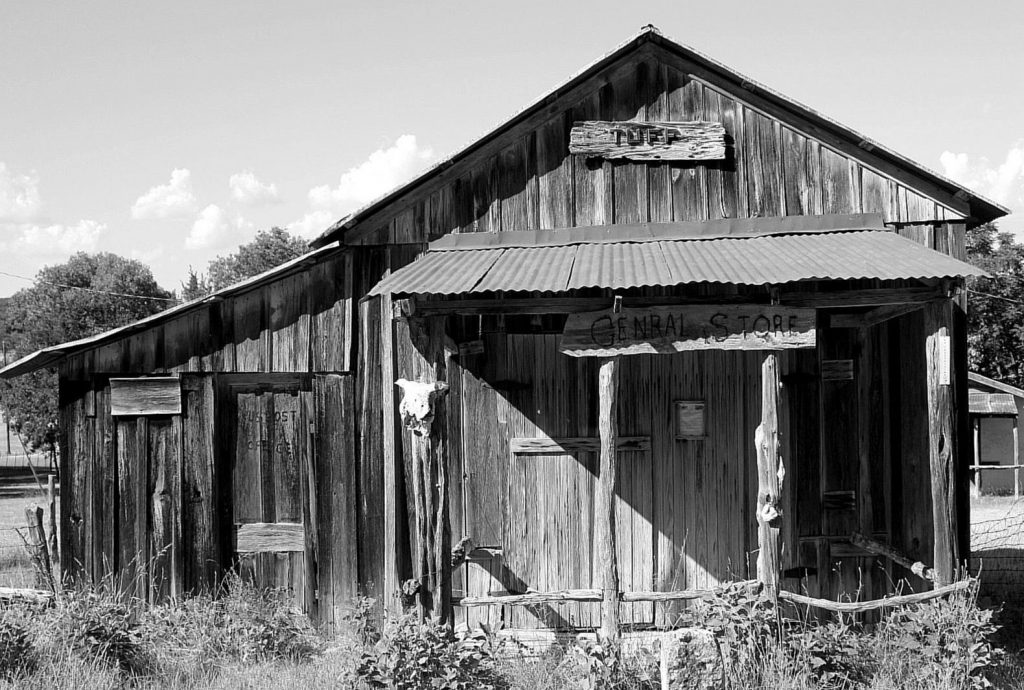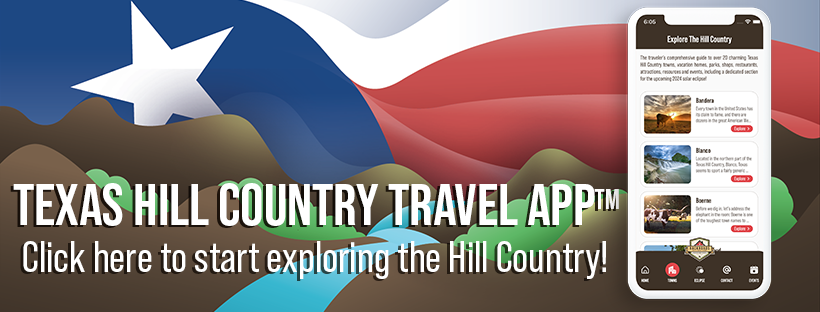Tuff, Texas

There are jokes about small towns in the Hill Country (and, in our travels, we’ve heard them in a lot of other places in the US, too). You’ve probably heard some of them: blink and you miss it; it’s just a wide spot in the road; they roll up the sidewalks at 8 o’clock every night; Sally Jones had twins and doubled the town’s population. It’s perhaps because of these jokes that we’ve found the smaller the town, the more proud people are to claim being from them. We’ll revisit that point in a minute.
We’d like to turn our focus to a ghost town that has dwindled down to almost nothing; jokes aside, you really would blink and miss it if you didn’t know where to look. In western Bandera County, about 25 miles west of Bandera itself, you’ll find what remains of the Hill Country town of Tuff, Texas.
Facts about Tuff’s history are few and far between. Its location on Jackson Creek, a small western tributary of the Medina River, offered fresh water for a small population, but the seasonal drying of the creek meant it couldn’t reliably support a large number of people year round. Nonetheless, Tuff was established in the early 1880s, as a workable midpoint between Medina to the east and Vanderpool to the west.
Tuff may also have suffered from an identity issue. In 1883 one of its first settlers, Andy Crockett, donated land for a school, and the village was called Crockett in his honor. However, at the same time locals were also calling it “Tuff.” (The origin of this name is lost to history, though the best guess we could find was that it was a simplified spelling of the word “tough,” which you’d certainly need to be to survive as a settler in that era!) What’s more, there was already an established town named Crockett in Texas, about 100 miles north of Houston. By the turn of the 20th century, Tuff was agreed upon as the village’s name.
Tuff had a school, and in 1901 it reached another milestone toward becoming a town: a post office. Ola Adams would serve as Tuff’s one and only postmistress, doing so until the office closed in 1926. At its population peak in 1914, Tuff had 50 people living there, though a mere decade later there would only be ten. Their school consolidated with Medina’s in 1930, and Tuff started disappearing from maps.
Sadly, Tuff just never really got going well enough to flourish; a common fate of hundreds of settlements across the country. It was located on good ranching and farming land, but with spotty water resources and better-established (and growing) towns nearby, its existence became redundant. Tuff, became a ghost town.
Remember the small town pride we mentioned in the first paragraph? In the early 1990s local folks collected and renovated log cabins from the area, and relocated them to where the old Tuff school stood. Alongside the original post office and general store, they stand in tribute to the little town that was.
To visit Tuff from Bandera, take State Highway 16 North westward to Medina, a drive of 13.5 miles. From Medina, take Ranch Road 337 westward for 10 miles, until it meets Jackson Creek Road. Turn left on Jackson Creek and drive about half a mile, keeping left onto a small spur of the road. Tuff will be on your right.
Once you’ve visited Tuff, there’s plenty more to see in the Hill Country! Explore with confidence with the Hill Country Travel App; the FREE download provides up-to-date information about over 20 towns, local businesses, events, and much more. It’s available on both iPhone and Android!
Discover the magic of Texas Hill Country with our Facebook Group! Whether you’ve booked a stay with Backroads Reservations, are planning your next getaway, or simply love this scenic region, our community is for you. Connect with fellow fans and celebrate the stunning beauty of the Hill Country!

